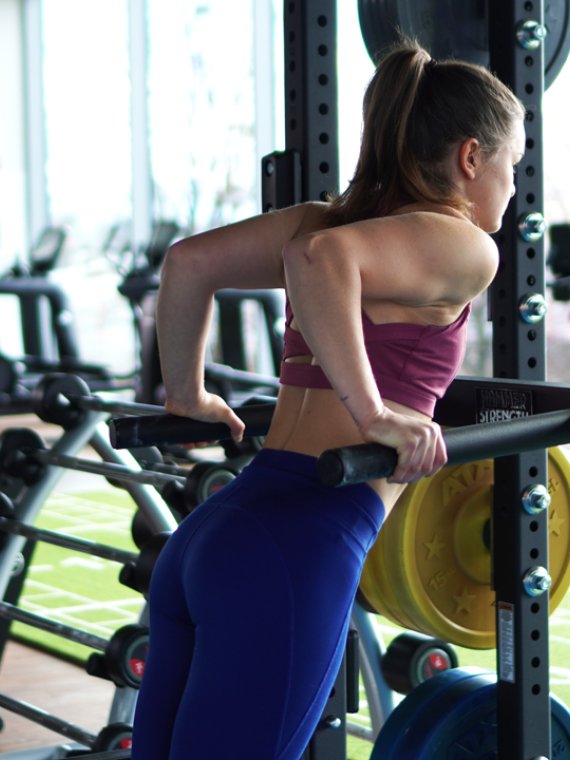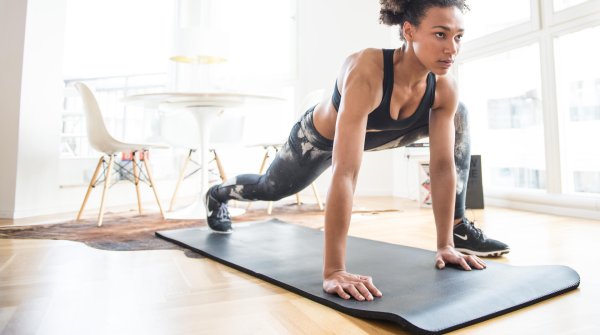HIIT - Lose Weight Quickly & Effectively with Interval Training
HIIT, these letters stand for "High Intensity Interval Training". It refers to an efficient and at the same time with a low time expenditure connected whole body workout, which strengthens the muscles and promotes the condition.
Why the workout is so effective, how you can plan your next workout and why you should definitely incorporate HIIT training into your workout routine, we have summarized for you here.
For fitness fans, the four letters HIIT have long been a guarantee for effective and time-saving intensive training with many benefits. Specifically, HIIT is a form of training that involves short intervals of exertion with breaks that vary in length. The duration of the load can last between five seconds and several minutes and be performed over several rounds. Which exercises are done is up to the exerciser.
Whether a beginner or a fitness enthusiast, HIIT is suitable for everyone. However, the span of the loads or breaks should adapt accordingly. Often there is the 1:2 ratio, for example, 20 seconds of load and then 40 seconds of rest. The ideal is the 1:1 ratio, where the load and break last the same amount of time.
HIIT in its various forms is not only taking over the gyms, but has also become a popular fitness trend at home. Since the exercises are completed with one 's own body weight, there is no need for extensive training equipment or gear. But with such an intense load, attention should be paid to the right clothing during training. It is advisable to rely on functional clothing made of stretchy fabrics such as compression shirts and breathable materials.
Depending on whether someone prefers sprints and running exercises or jumping exercises during HIIT, proper sprint shoes or models with buffered soles should be chosen accordingly.
HIIT has long been the talk of the town as a fitness trend, Tabata is a special form of this high-intensity interval training that scores with exercises that can be completed in four minutes. That's right, according to a study by Danish sports physician Peter Krustrup, these few minutes of daily training alone are enough to burn fat and boost fitness.
The basis of FIIT, which combines extremely strenuous workouts with short regeneration phases, raises the heart rate to its highest level within a short period of time and thus contributes to increased fat burning.
The HIIT training method is based on the principle of alternating high-intensity segments with moderate phases or even active breaks. For example, sprinting is done in the power interval, while then simply walking is done in the active relaxation time. An interval in HIIT always refers to the load unit itself plus the minimal break to a recovery. However, it is important that the load remains high throughout.
This high intensity refers to the heart rate, which should be between 85 and 90 percent of the maximum heart rate during the load phase. In the relaxation phase, this can then drop to 40 to 50 percent.
The intensity of HIIT training can already be derived from its name. This is because High Intensity Interval Training demands, which can quickly throw off beginners in particular and thus cause injuries or ineffective execution of exercises. Therefore, here are three quality standards for the exercises that can serve as a basis for effective training.
The first step is to ensure that the exercises are performed cleanly and correctly, which is especially important at the beginning of HIIT training. The second criterion is to use the appropriate intensity during the load phases. And thirdly, it is important to use breaks effectively for regeneration, either through targeted breathing or by taking a small sip from the water bottle.
HIIT workouts in all their subtypes, such as Tabata, can be performed very well at home. After all, one sequence lasts four minutes and some people may think, why go to the gym for this short time? But even that can be worthwhile. Because Tabata in particular can be effectively modified with the use of dumbbells or kettlebells or TRX and individually combined with other training methods. Another advantage of training in a studio is that you don't train alone.
With units in the group the motivation increases, social contacts are promoted and above all the training is led by experienced trainers. Newcomers in particular benefit from this, but so does everyone else. Because it has long been clear that a workout under guidance is much harder than one that is designed by oneself. Only a few people can put themselves under so much pressure alone and within their own four walls that they actually go to the limit in an intensive training session. If other course participants or the trainer are present, this is easier to achieve.
Tabata is considered a special form of HIIT and is based on a four-minute workout in eight intervals, each with 20 seconds of load followed by 10 seconds of rest. These intervals can be incorporated very well into other training routines. Tabata training takes its name from Japanese scientist Izumi Tabata, who found that intense training for four minutes over five days in a week leads to a massively increased maximum utilization of oxygen in the body. It also adjusts aerobic metabolism. The target heart rate is 100 percent with Tabata, but only 85 to 90 percent with classic HIIT training.
Those who do HIIT regularly - in whatever form - and include sufficient regeneration phases in between, benefit from numerous positive effects. Among other things
- Fat burning is maximized
- The endurance is increased
- Muscle mass is built up, of course only if strength exercises are integrated into HIIT.
It is clear that HIIT burns much more body fat than the usual fitness training or workout in the same period of time. The exercises force the body to use an above-average amount of oxygen when moving at the limit of its load capacity. This boosts the metabolism. HIIT is therefore suitable for anyone who prefers to invest less time in their training, but then does so at maximum intensity.
In connection with HIIT, the term "afterburn effect" comes up again and again. If you now ask yourself what this is, you will get a simple answer. Because the afterburn effect is the fact that after a HIIT interval, the body has to expend a lot of energy to get back to normal. Even long after the end of the workout, the athlete's energy metabolism is still elevated, and under certain circumstances this afterburn effect can last 24 to 72 hours after the exercise phase. Sooner or later, this has a positive effect on the fat percentage in the body.
Experts recommend doing one or two HIIT sessions per week, with at least 48 hours between them. This is necessary so that the muscles can regenerate properly. Three simple methods support the athlete if he wants to come up with his own workouts.
First, there is the EMOM principle. This means Every Minute on the Minute and means that at the beginning of each training minute a certain number of repetitions is done. The rest of the minute is rest and is used to perform other exercises. To be most efficient in the EMOM workout, it is recommended to have one exercise for the lower body, one for the upper body and one core exercise or full body exercise such as squats or push-ups or burpees. A time is set in advance for the workout and it is decided how many repetitions will be performed for each exercise.
The second principle for a good HIIT workout is AMRAP, which stands for As Many Rounds As Possible. This involves putting together a kind of circuit training from a few exercises, which is performed as many times as possible in a set time. There should also be no breaks in the process. Both exercises and the number of repetitions and the total training time are freely determined or selected before the start of the workout.
The third principle lies in Tabata HIIT, which means 20 seconds of high performance workout, then 10 seconds of rest. The whole thing for four minutes, in other words, it is about performing eight sets, which can be trained popular, for example, push-ups or kettlebell swings or jumping rope. The Tabata model for HIIT is good especially for beginners, but those who are already a little more trained can simply complete two or three passes of the workout in a row. It is always important to go to the limit during the intensive phases and to bring heart rate and pulse rate down again within a very short time during the breaks.
Basically, HIIT workouts can last between four and 45 minutes. There are no fixed guidelines or rules regarding the interval length. However, over time some patterns have emerged and established, namely that the rest phase is about half as long as the load phase, for example: Load between 15 and 60 seconds and then a rest period between 10 and 30 seconds.
It should be noted that the rest phase should only ever last as long as it takes for the athlete to feel confident about the upcoming load again, never longer.













